We’re diving into seafood today. From delicate scallops to salty oysters and regal salmon, there’s a world of culinary treasure beneath the waves. Welcome to our Seafood Masterclass.
Unfortunately, cooking seafood at home is often as daunting for many as swimming in shark-infested waters. And that’s a real pity, because if you didn’t know, seafood is perhaps one of the simplest and quickest proteins to cook. You just need to know a few things to get it right.
- For starters, it’s crucial to choose quality seafood. Forget anything about “it smells so fishy” – that’s a popular misconception. Quality fish smells of the ocean. If there’s even a hint of an unpleasant aroma, like low tide or ammonia, that’s not a piece of seafood you should be eating! In this article we’ll go over some of the most important things to look for when you buy different types of seafood, to make sure you always get the freshest catch on your plate.
- The next step is careful handling. Think of your seafood like a precious artifact. No roughhousing; handle it with care and delicacy, particularly when moving it to your pan or grill. We’ll cover the best way to make sure your selected seafood treasure gets the best possible treatment.
- Finally, the cooking. The key here is simplicity. It’s tempting to go overboard with seasonings and sauces, but the best flavors shine through with a dash of salt, a squeeze of lemon, or a touch of fresh herbs. In this class, we will make sure you know the classic spice mixes for different types of seafood, and inspire you to create you own versions.
Whether to choose wild caught or farmed – that’s a hot topic which we’ll delve into later in the article. Keep reading.
The Art of Selecting the Freshest Seafood
Ever felt intimidated in the seafood aisle? Wondering how to distinguish the prime catch from, well, the fishy ones? Let’s demystify the oceanic arena by breaking it down and focusing on purchasing the freshest seafood of different types — lean fish, fatty fish, shellfish, mollusks, and our eight-armed friend, the octopus.
First, let’s look at lean fish. We’re talking about your perch, snapper, or bass — the marathon runners of the aquatic world. With these, you need to pay attention to a few obvious signs. The skin should be shiny like it’s just come from a day at the fish spa, and the flesh? It should spring back as if it’s on a rebound from a bad date when you touch it. And those eyes? They should be as clear as crystal, not cloudy.
Next up, the fatty fish: Think salmon, mackerel or tuna. Look for sleek, almost moist-looking scales that glimmer under the light. The richer the color of the flesh, the fresher the fish. Red for tuna, bright pink for salmon, and, for mackerel, that characteristic, grey-purple tone. If the shades seem faded or the flesh looks dry, consider it more of a fossil than food.
“The essence of seafood buying boils down to this — ‘Look, touch, and sniff’”
Shellfish, including delicious species like crab and lobster, carry their freshness signs a little differently. Their shells should be firm, without blemishes or discolorations, and shut tight. The moment it feels like a squishy sea sponge or smells similar to your aunt’s old seaside cabin, you need to take a hard pass.
On to mollusks. In this category, we’re talking clams, mussels, and scallops. Look for tightly closed shells – an open shell is like your cousin who falls asleep with his mouth open at every family gathering, a clear indication they’re not at their freshest. Give ’em a tap, if they don’t close back up, wave them goodbye (the opposite goes for mollusks that have been cooked. If a mussel is still closed after taking a solid steam bath, throw it away).
Lastly, for the octopus, that tentacled curiosity from the deep. Fresh octopuses should boast a vibrant sheen, firm flesh, and a sea-like smell. If they look dull or odoriferous, do yourself a favor and let that oddball octopus go.
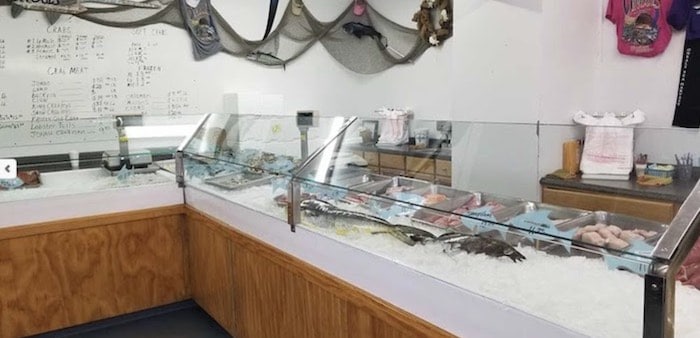
Seasons Change and So Should Your Catch
Let’s not forget, that just as you wouldn’t don a bikini in winter, certain seafood also has its season. Spring beckons the arrival of the lean fish, making perch, snapper, and bass a wonderful choice. As we move into summer, the fatty fish come out to play, making it the best time to grill up some fresh salmon, tuna, or mackerel.
Autumn brings a cornucopia of shellfish, the crabs and lobsters are at their peak, ready to grace your dining table. As for winter, it’s mollusk time — those clams and mussels are huddling tight, and they are primed for your pot.
And as for our tentacled friend, the octopus? He’s a year-round fellow, ready to add some exciting vibes to your seafood spread whenever you are.
How to Handle Seafood at Home
You’ve successfully navigated the seafood section and are now in possession of your aquatic bounty. Now, what’s next? Let me walk you through the process of safely and succulently preparing seafood at home.
- Timing is Key: While robust species like salmon might keep for a tad longer, most fresh fish should be cooked within 1 to 2 days of purchase. Live shellfish, on the flip side, need prompt attention. Oysters, clams, and mussels ought to be cooked within a day of purchase to maintain peak freshness.
- Keep it Cool: Stow your seafood on ice or in the chilliest part of your refrigerator, where the temperature stays under 40°F. Neglecting this could lead to a premature end of your seafood adventure.
- The Cold Shoulder: When storing shellfish like mussels, clams, or oysters, place them in crushed ice but avoid sealing them airtight. They’re still breathing and need the slightest touch of fresh air. No need for an escape plan, they’re not going anywhere.
- Handle with Care: For particularly delicate fish such as white fish or fillets, be gentle. Pretend you’re handling a fragile antique, otherwise, you might end up with fish flakes.
- Wrap it Up: If the fish isn’t making it into your recipe within a couple of days, zip it up in freezer-safe plastic and send it to the solitude of your freezer.
- Clean Slate: Do not compromise on cleanliness. A fresh cutting board, a sharp knife, and washing hands before and after handling seafood are mandatory to prevent unwanted cross-contamination.
Steaming, Grilling, Frying, Braising, or Baking: Best Cooking Methods for your Seafood
Let’s move on to mastering the five principal techniques: steaming, grilling, frying, braising, and baking. No culinary degree required.
Steaming: The Subtle Way to Cook Seafood

Steaming is about subtlety. It’s like a gentle yoga stretch for your seafood that brings out its natural beauty without breaking it. It’s gentle on the seafood, retaining its flavors and nutrients. You can steam everything from shellfish like mussels and clams to fish filets like flounder and tilapia.
- Key Technique: The seafood should hover over, not in, the boiling water. That’s why a steaming basket or tray is your best buddy here.
- Pro Tip: Aromatics are your secret weapon. Try steaming with a base of lemongrass, ginger, or garlic-infused water. The rising steam infuses your seafood with these tempting aromas for a flavor boost.
Grill: Fast, Fierce, and Flavorful
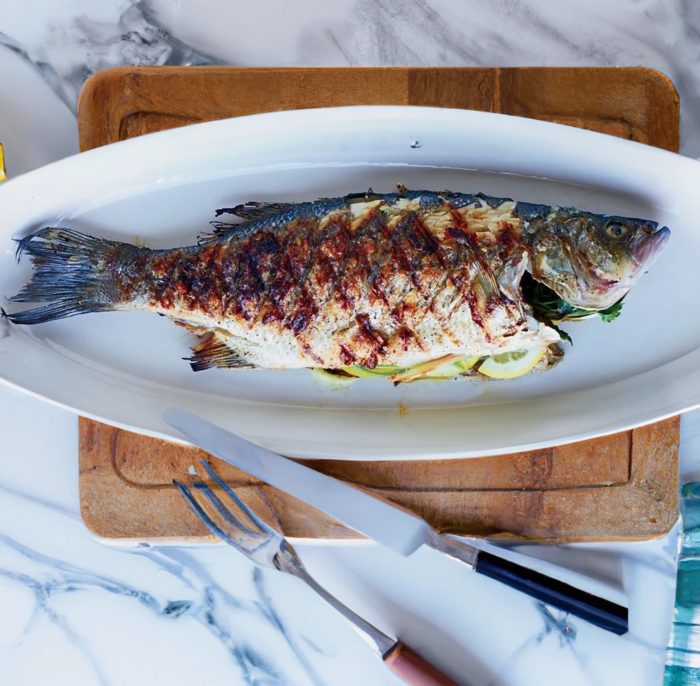
In grilling, we’re obviously talking about introducing your seafood to smoke and open flame. The result? A flavor-packed, crispy exterior with a tender inside, a match made in heaven. Grilling fits best with firm and fatty fish like swordfish or salmon. Or try it with a marinated shrimp skewer and prepare to be amazed.
- Key Technique: Prevent the sticking nightmare by generously oiling your grill grates. And remember, patience is key! Resist the temptation to poke or move the seafood too soon.
- Pro Tip: Marination magic should be your mantra. An olive oil, garlic, lemon, and herb marinade never goes wrong.
Frying: Crisp and Tender

Frying is flashy and satisfying, offering crunch and tender fish in the same bite. From pub-style fish and chips with cod or haddock to crispy calamari and even soft-shell crab, the possibilities are endless.
- Key Technique: As a rule, dry your seafood before it takes the deep plunge. This subdues oil splatters and aids in achieving that perfect golden finish.
- Pro Tip: A little experimentation with your batter can lead to some pleasant surprises. A pinch of paprika? A whisper of white pepper? Find your winning mix!
Braising: The Slow Method
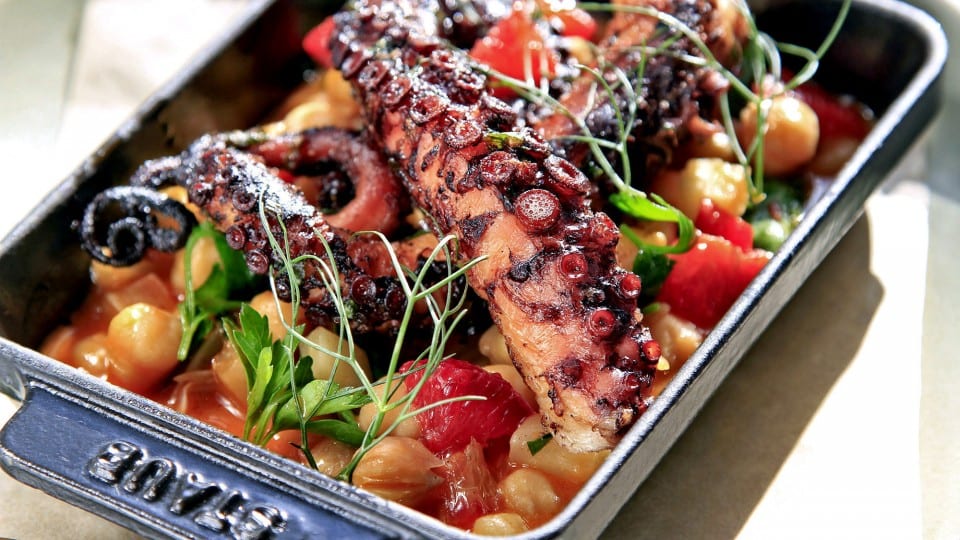
Now, if you’ve ever wondered how to cook octopus at home without ending up with a rubbery mess, braising is your answer. This is the slow dance of cooking, where the gentle heat and moisture work their magic over time, transforming your octopus into fork-tender deliciousness.
- Key Technique: After an initial sear, your seafood is gently simmered in a flavorful liquid. Broth, wine, or even a combination can serve as the braising liquid.
- Pro Tip: Play around with the braising liquid. Coconut milk and lime leaf add a Southeast Asian flair, while tomato, garlic, and olives can put you in a Mediterranean mood.
Oven Baking: Seafood to Perfection
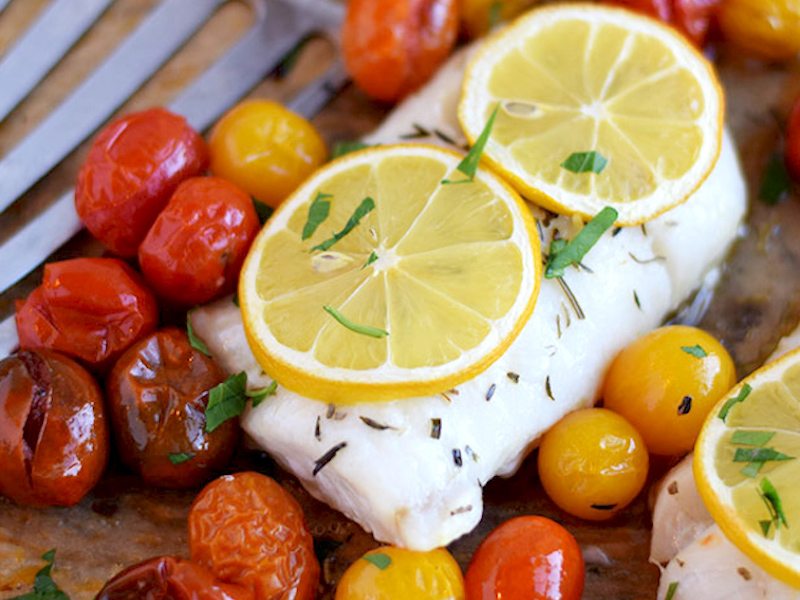
Baking seafood in an oven is a culinary art form that’s as old as time (we think). It’s the perfect one-two punch of convenience and health. Just set the temperature, timer and let the oven perform its sorcery. The end result? A tender, moist piece of seafood that’s hard to beat. From fillets of haddock and salmon to whole fish like branzino or sea bream, the oven takes the crown for versatility.
- Key Technique: A high temperature means a fast cooking time, locking in flavors and juices. The golden rule? The rule of 10: Cook fish for ten minutes per inch of thickness.
- Pro Tip: Set sail and try the ‘en papillote’ technique, where the seafood is sealed in a parchment paper package with veggies, liquids, and aromatics. Not only does it cut down on clean up, but it also infuses the seafood with incredible flavor. And it looks cool when you serve it.
The Best Cooking Method, Cook Time and Temperature for Different Seafood
| Seafood | Best Cooking Method | Approximate Cook Time | Approximate Cook Temperature (Fahrenheit) |
|---|---|---|---|
| Salmon | Grilling | 12-15 minutes | 450-500 |
| Tuna | Searing | 2-3 minutes per side | High Heat |
| Shrimp | Frying | 2-3 minutes per side | 350-375 |
| Scallops | Searing | 1-2 minutes per side | High Heat |
| Lobster | Steaming | 18-20 minutes | N/A |
| Mussels | Steaming | 5-7 minutes | N/A |
| Cod | Frying | 8-10 minutes | 400-450 |
| Halibut | Grilling | 10 minutes per inch of thickness | 400-450 |
| Oysters | Grilling | 5-10 minutes | 450-500 |
| Crab | Steaming | 10-20 minutes | N/A |
| Octopus | Grilling | 15-20 minutes | 350-375 |
| Clams | Steaming | 8-10 minutes | N/A |
| Squid | Frying | 2-3 minutes | 350-375 |
| Prawns | Grilling | 5-7 minutes | 400-450 |
Essential Techniques Every Seafood Chef Should Know
- First on our list: While many people prefer to devein their shrimp for aesthetic reasons, the truth is, it’s not always necessary. But if you still feel uncomfortable with the idea, or you’re preparing for some picky eaters, then by all means, devein away! Here’s a handy guide to make the process less daunting.
- Master the art of shucking shellfish. We’re talking oysters, clams, scallops – the usual stars. Here’s a super helpful tutorial for you. Hold your shucking knife high and advance!
- It’s just you and the fish. Filleting a fish can be terrifying, but guess what? You. Can. Do. It. Remember, down from the gill cover to the tail. Very sharp knife. Smooth strokes. You’re not sawing firewood. Here’s a step-by-step guide.
- Elevate each plate with homemade seafood stock. Don’t toss those fish bones and shells – turn ’em into liquid gold instead. Check out this link to guide your way.
Seasoning 101: The Best Spices for Your Seafood
When it comes to seasoning seafood, you can either stick to the beaten path or blaze your own trail. But there are some cardinal rules that you want to follow. With that in mind, let’s look at how different spices work with various types of fish.
- Don’t overdo it! Seafood flavors are often subtle, and many types of fish absorb the flavors of your spices very quickly. So use a gentle touch when you spice your fish.
- If you want to be more heavy handed with your spices, your best bet is to use seafood that can really stand up to bigger flavors. Shrimp is the champ of this, but crayfish and salmon also have the flavor profiles that can take the heat from spices.
- When it comes to scallops, simplicity is key. A touch of garlic and a sprinkle of parsley will do the trick. With their sweet and soft flesh, they are quite the crowd-pleaser.
- For cooking lobster, don’t shy away from that bottle of Old Bay seasoning. Its unique blend of herbs and spices gives your lobster a spicy, tangy kick that can make even the staunchest meat-lover swoon.
- Clams are delightful with thyme. The delicate, slightly earthy flavor of thyme is an excellent pair to the deep-sea taste of Clams.
- For hearty tuna steaks, try the zesty punch of cumin. The strong, earthy taste of cumin enhances the robust flavor of tuna.
- If you find yourself handling swordfish, a touch of rosemary and a sprinkle of sea salt will complete your masterpiece.

The Best Seafood and Seasoning Pairings
Check out this handy table chock-full of A-list pairings between different seafood types and their most dashing seasoning mates. These couples have been picked based on their ability for elevating, not bulldozing, the seafood’s natural flavors. Consider this table your secret map on your seafood adventure. And hey, don’t be afraid to mix and match – constructing your exclusive flavor persona is all part of the culinary journey.
| Seafood Type | Classic Spice Combination | Also Try |
|---|---|---|
| Shrimp | Garlic, Paprika, Lemon | Cilantro, Lime, Cumin |
| Salmon | Dill, Lemon zest, Pepper | Brown sugar, Bourbon, Ginger |
| Cod | Parsley, Lemon juice, Butter | Old Bay seasoning, Garlic, Onion |
| Crab | Old Bay seasoning, Lemon, Garlic | Thyme, Cayenne, Mustard |
| Oysters | Shallots, Wine, Parsley | Garlic, Tabasco, Lemon |
| Sardines | Olive oil, Lemon, Garlic | Fennel seeds, Chili flakes, Orange zest |
| Mussels | Wine, Garlic, Parsley | Cilantro, Lime, Coconut milk |
| Trout | Butter, Parsley, Lemon | Almond, Dill, Wine |
| Halibut | Butter, Capers, Lemon | Fennel seeds, Olive oil, Garlic |
| Octopus | Oregano, Onion, Lemon | Paprika, Garlic, Wine |
| Eel | Soy sauce, Mirin, Sugar | Ginger, Garlic, Sake |
| Anchovies | Olive oil, Garlic, Parsley | Tomato, Chili, Capers |
| Flounder | Butter, Lemon, Dill | White wine, Garlic, Parsley |
| Sea Bass | Garlic, Rosemary, Lemon | Thyme, White wine, Tomato |
| Squid | Ginger, Garlic, Soy sauce | Chili flakes, Lime, Cilantro |
| Bluefish | Garlic, Lemon juice, Parsley | Mustard, Brown sugar, Soy sauce |
| Monkfish | Ginger, Soy sauce, Honey | Garlic, Thyme, White wine |
| Pike | Butter, Dill, Lemon | Fennel seeds, Garlic, White wine |
| Catfish | Butter, Cayenne pepper, Garlic | Paprika, Brown sugar, Oregano |
| Herring | Vinegar, Sugar, Onion | Mustard, Dill, Cream |
| Sturgeon | Butter, Garlic, Lemon | Olive oil, Rosemary, White wine |
Wild Caught vs Farmed, What You Need to Know
When we’re talking seafood, two words often float to the surface: wild-caught and farmed. Both have their pros and cons, and the right choice depends on a multitude of factors.
Starting with wild-caught, the major appeal lies in the natural diet of these sea creatures. They enjoy a diverse menu, which in turn, contributes to a complex flavor profile. Think of it as the seasoning Mother Nature provides. However, life at sea isn’t all sailing smoothly – heavy metals like mercury can accumulate in fish, potentially posing health risks.
Wild-caught fish also contribute to maintaining the balance of aquatic ecosystems. They’re like the breezy ocean air to the stifling city smog of overfishing. That said, some species are overfished and sustainability becomes a concern. It’s all about balance, right?
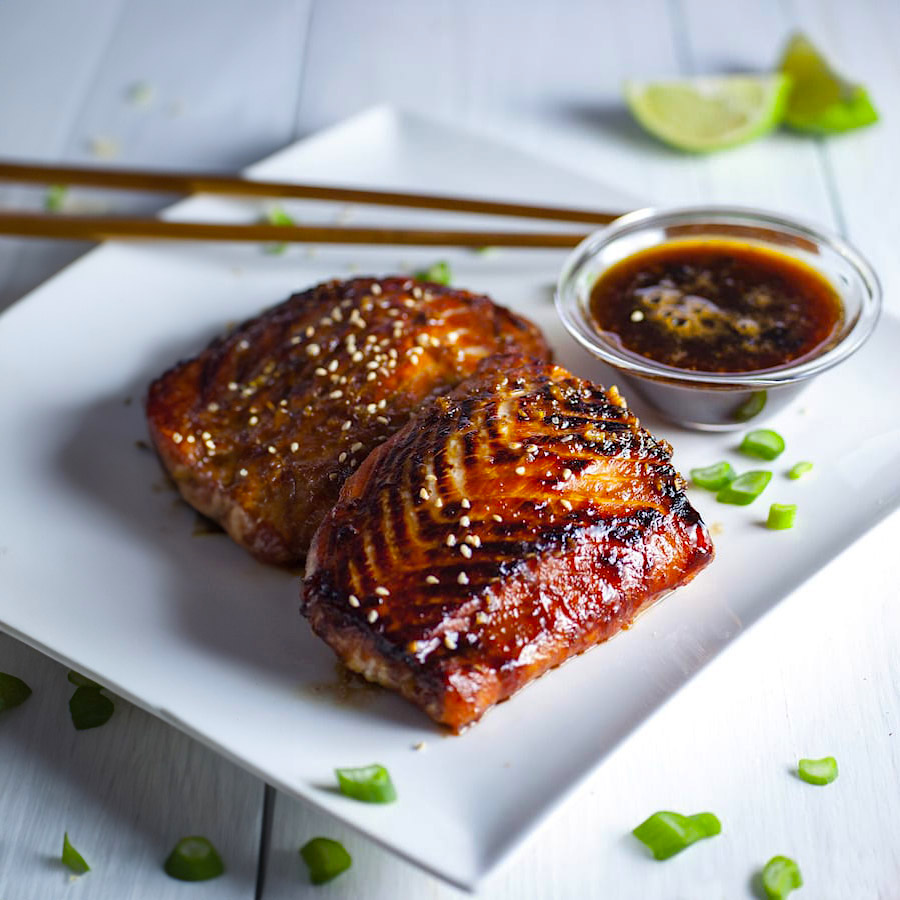
On the farmed front, one word sums up their major advantage: consistency. Farm-raised fish typically have more fat (that’s the good kind!) and a mild flavor, perfect for those who are testing the waters with seafood. Plus, farmed seafood can be a more sustainable choice – if done right. With stringent regulations and careful farming practices, we can curb overfishing and maintain the piscatorial population.
However, farmed seafood comes with its share of controversies. There’s the concern about crowded conditions leading to disease and the use of antibiotics. It’s like any major city during rush hour – overcrowded and stressful, and it affects the taste too.
Choosing between wild-caught and farmed isn’t a blanket decision. Take shrimp, for instance. Farm-raised often means they’re brimming with antibiotics and hormones, so wild-caught is the safer bet. But when it comes to salmon, farmed varieties often have higher levels of beneficial Omega 3 acids.
At the end of the day, the decision lies in your court. Armed with information, consideration for sustainability, and a discerning palate, you can choose the seafood that best suits your taste and values. Remember, knowledge is the real catch of the day. The best way to gain it? Talk to your fishmonger, and ask as many questions as you can.
To Sum it Up
We’ve come to the end of our seafood journey. But don’t worry, your adventure is just beginning. You now know how to choose the best seafood, align your meals with the changing seasons, and understand where your seafood comes from. You’ve learned a lot about cooking seafood, using various methods to bring out the best in different dishes.
And, a final tip from one seafood lover to another: perfection isn’t the goal. The fun part is the journey— learning, trying, and creating beautiful memories. So, get out there and confidently cook up a seafood storm at home!











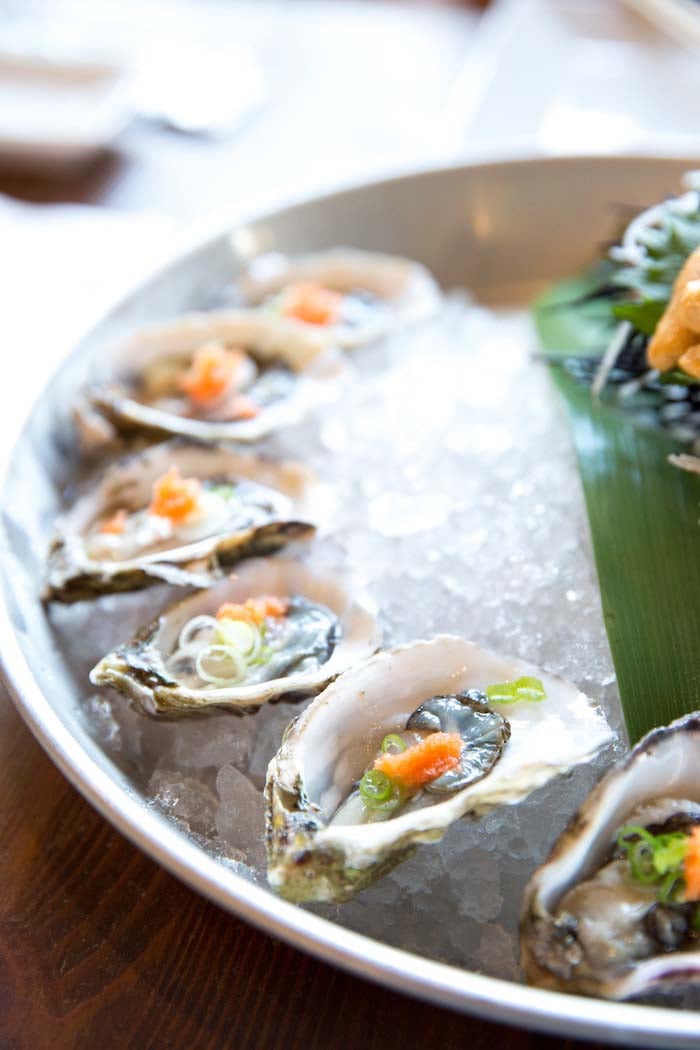











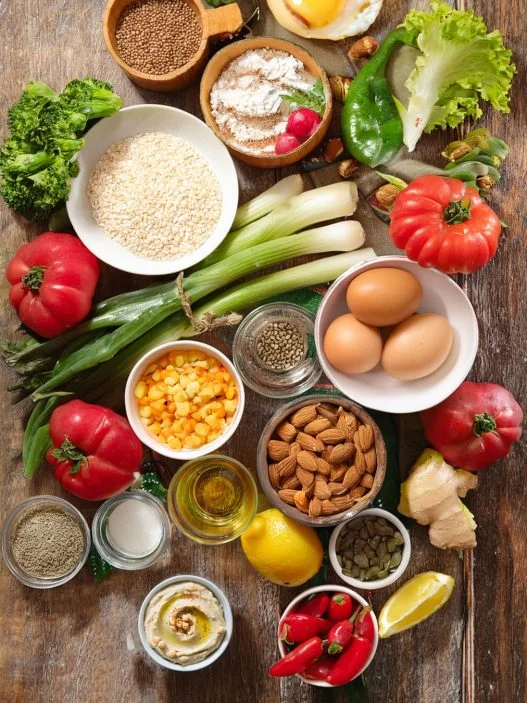
Amazing guide, thank you!
I have always been kind of reluctant to cook seafood, afraid to mess it up. But this was a great class and I feel way more confident to try it now.